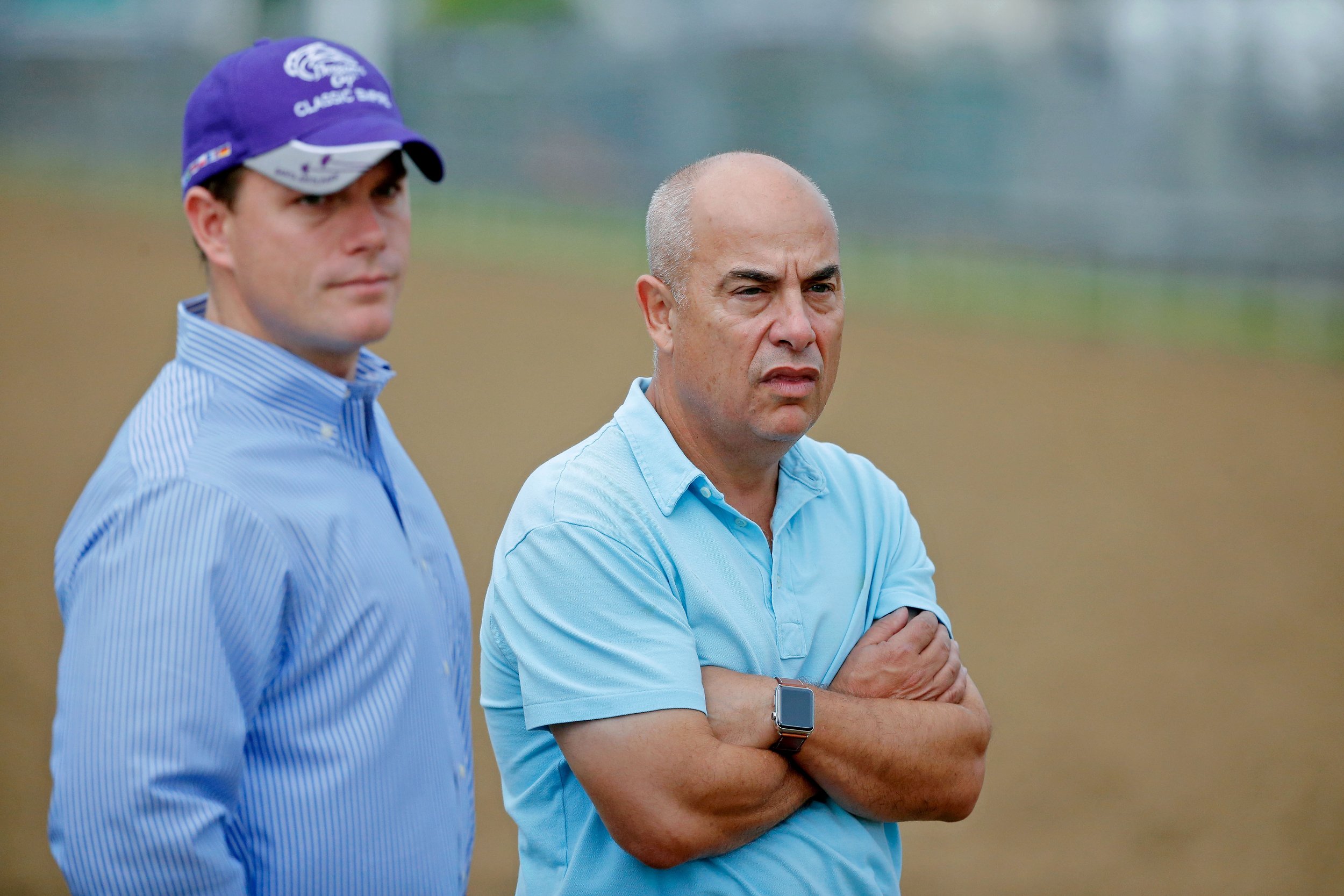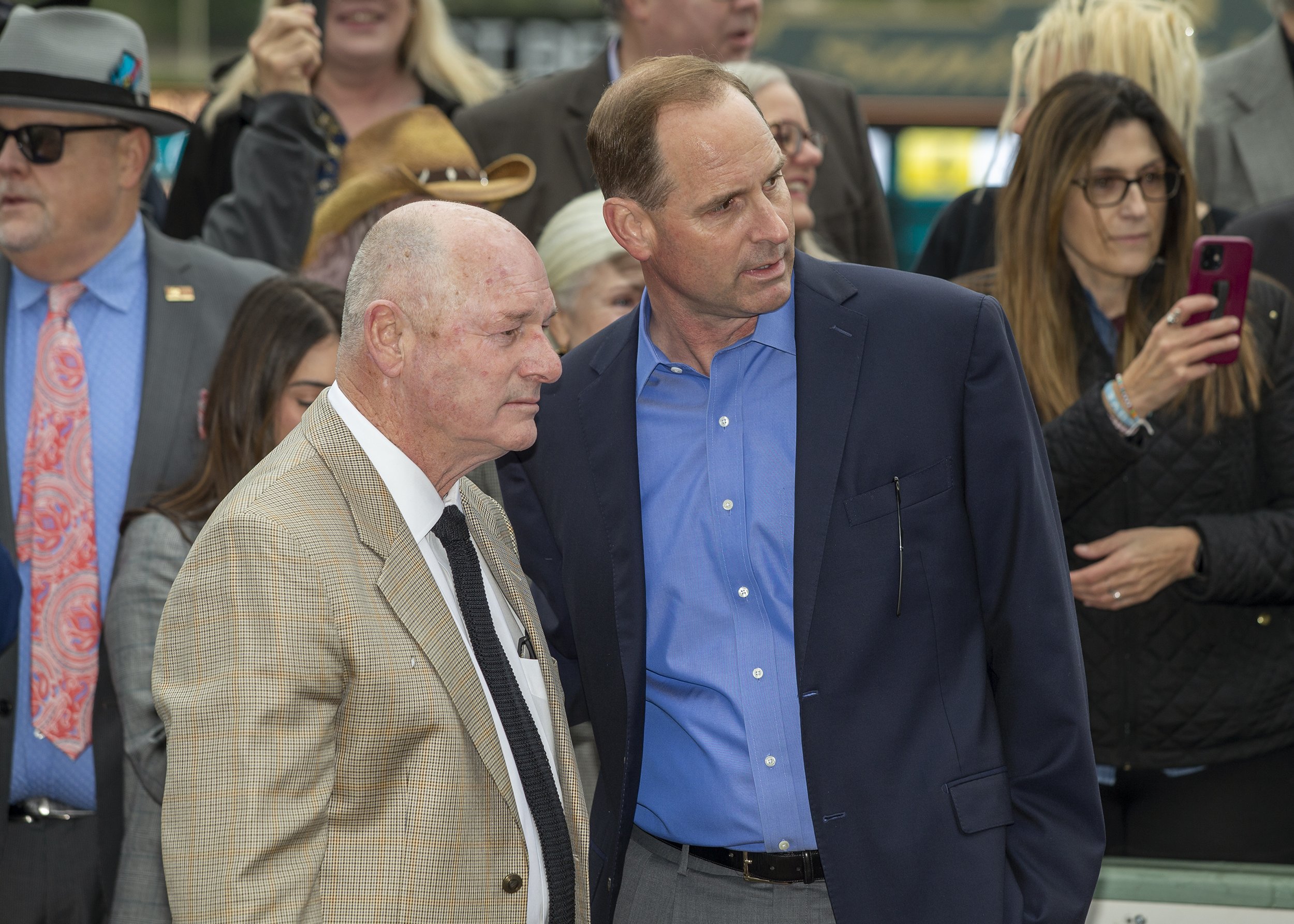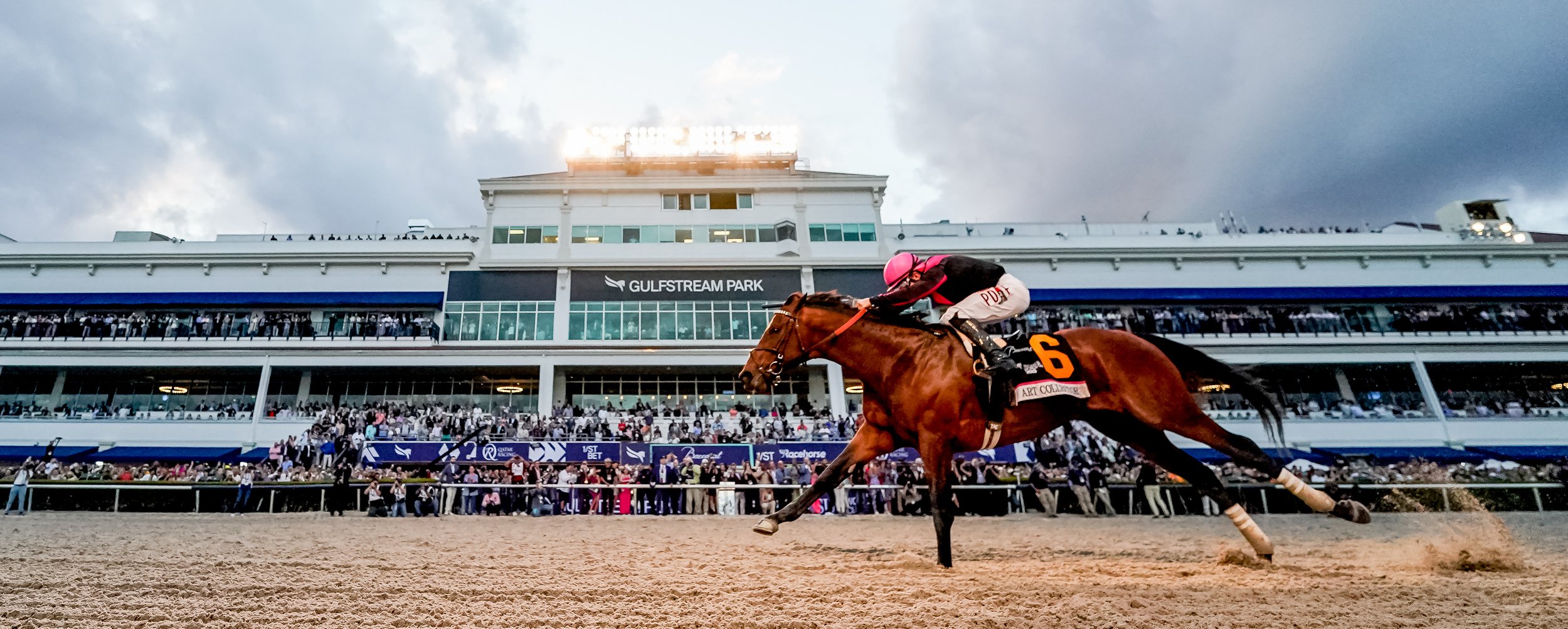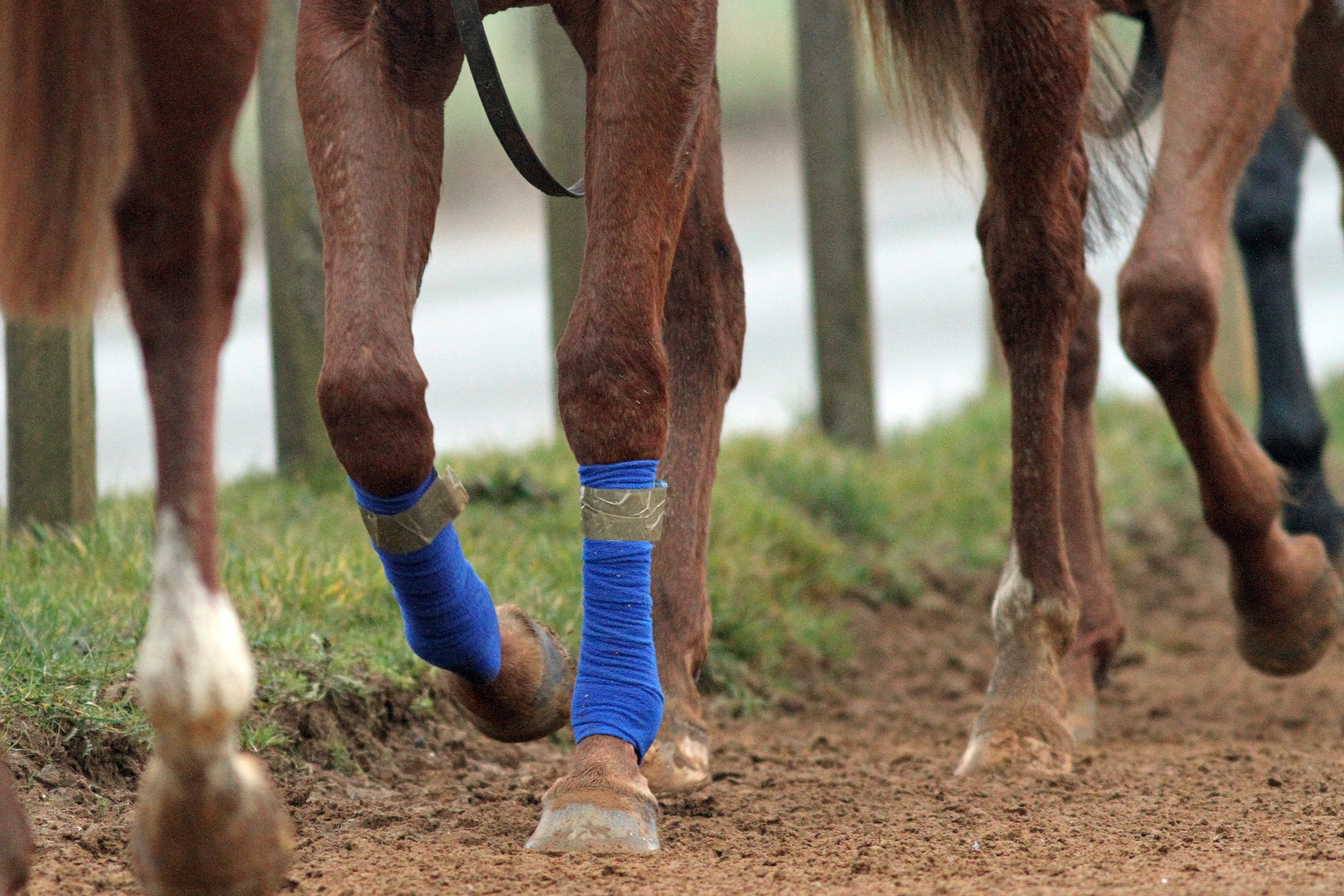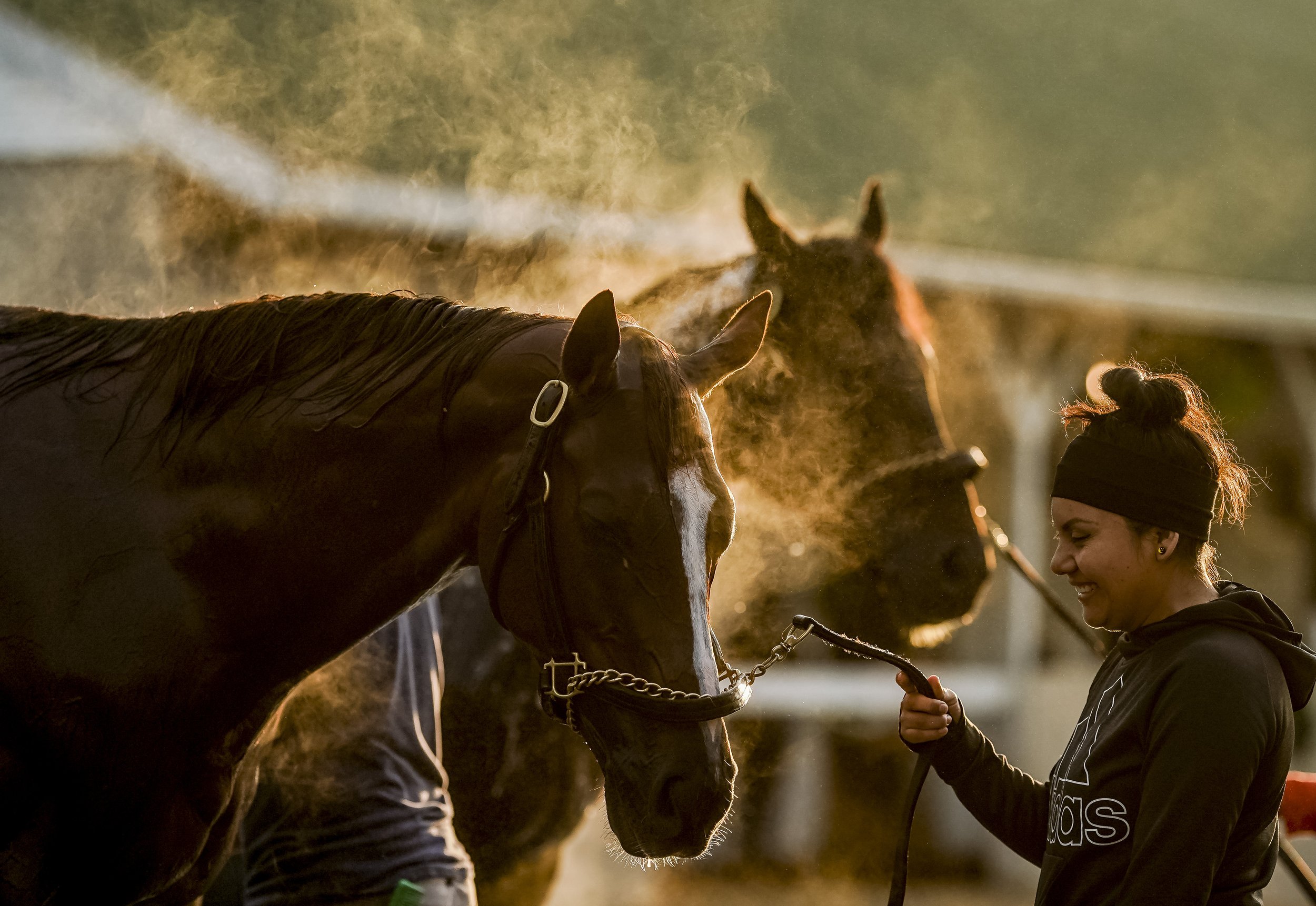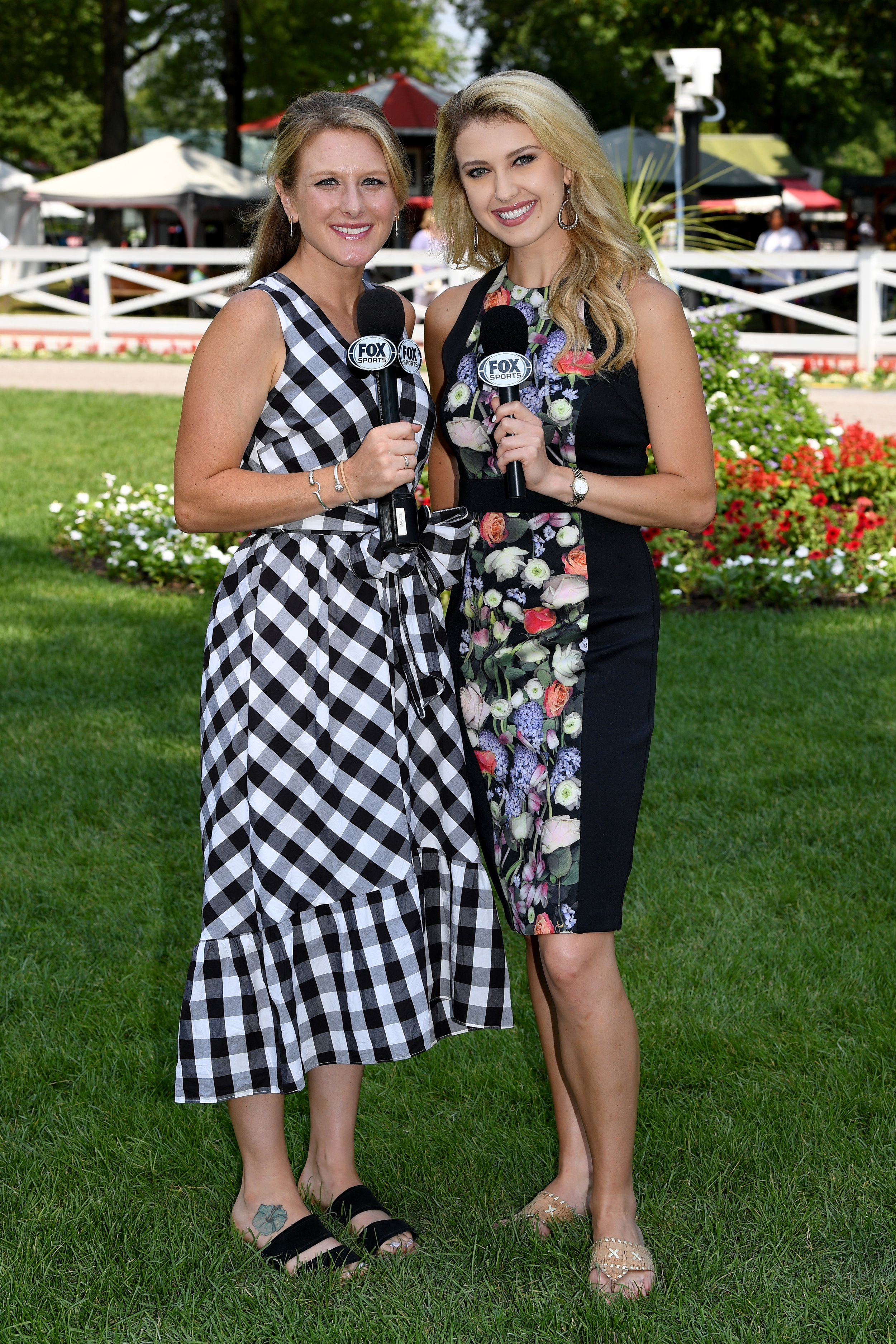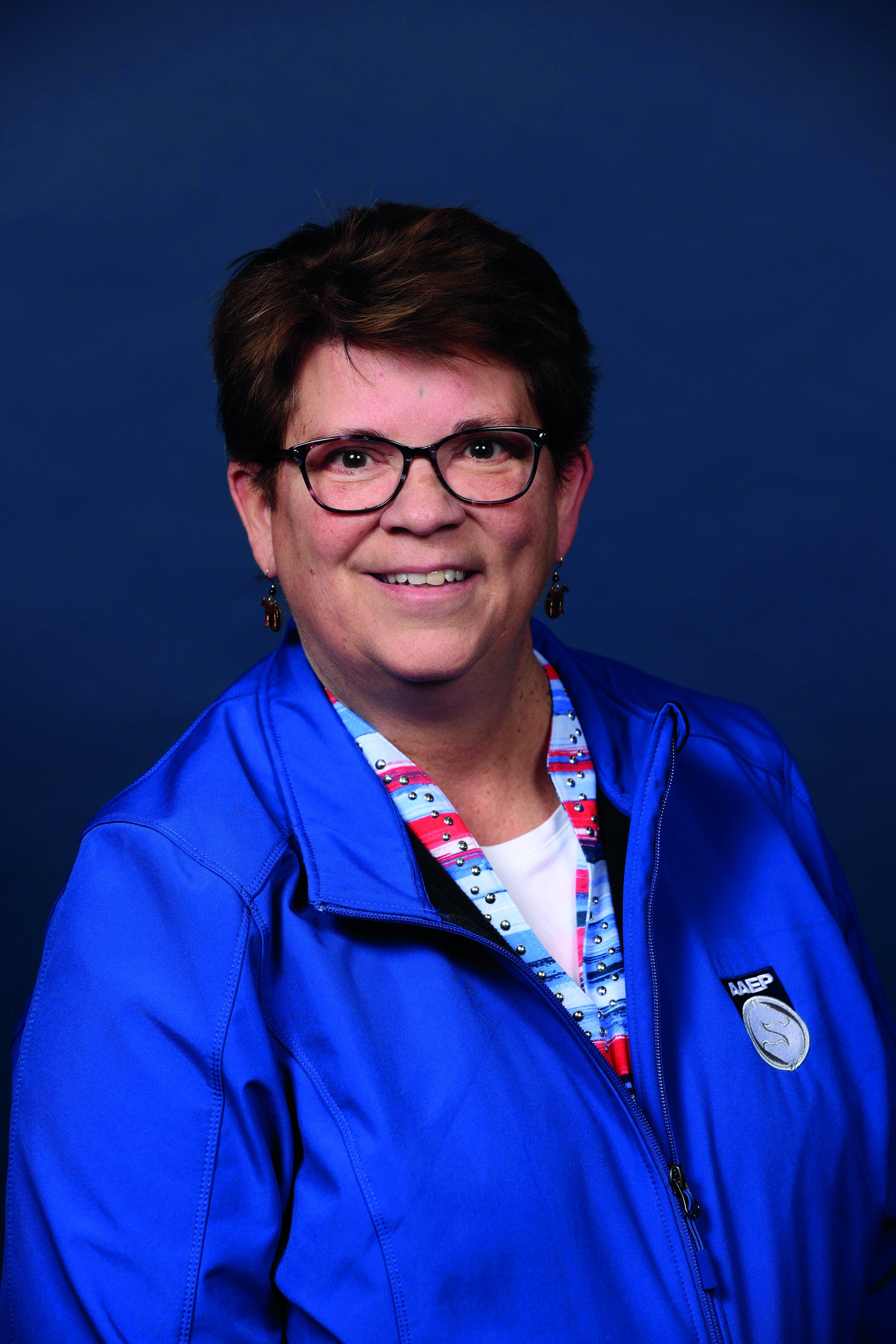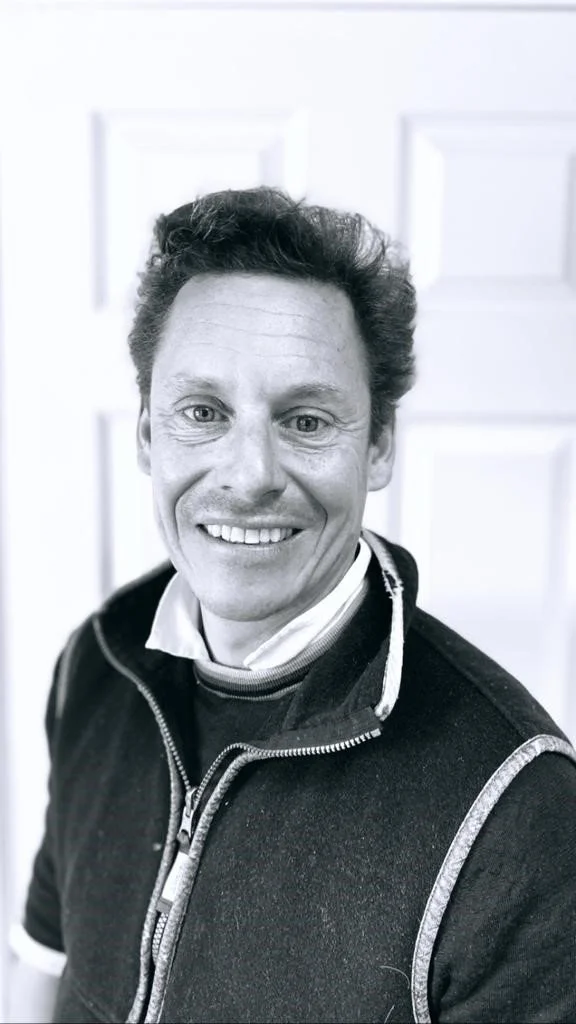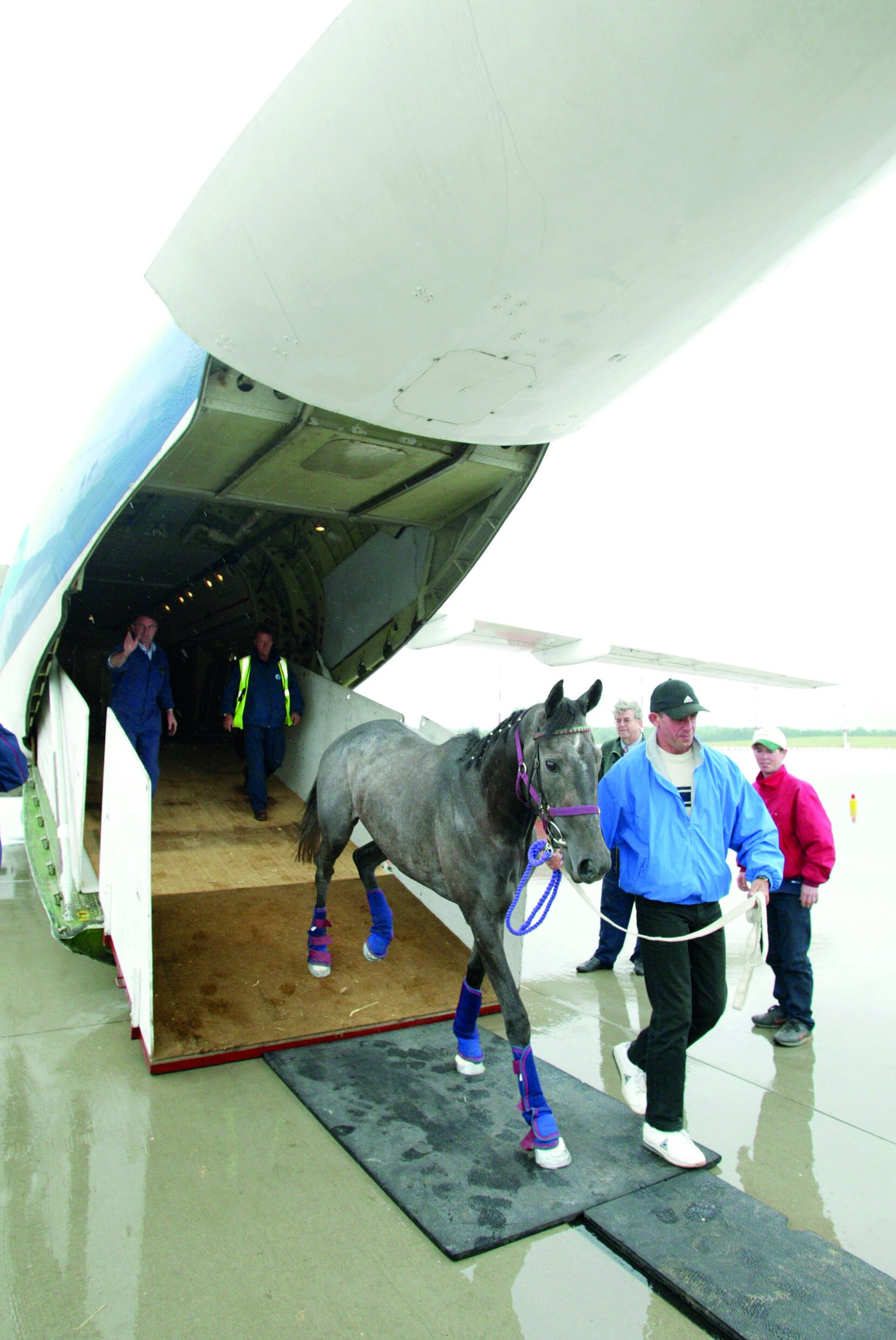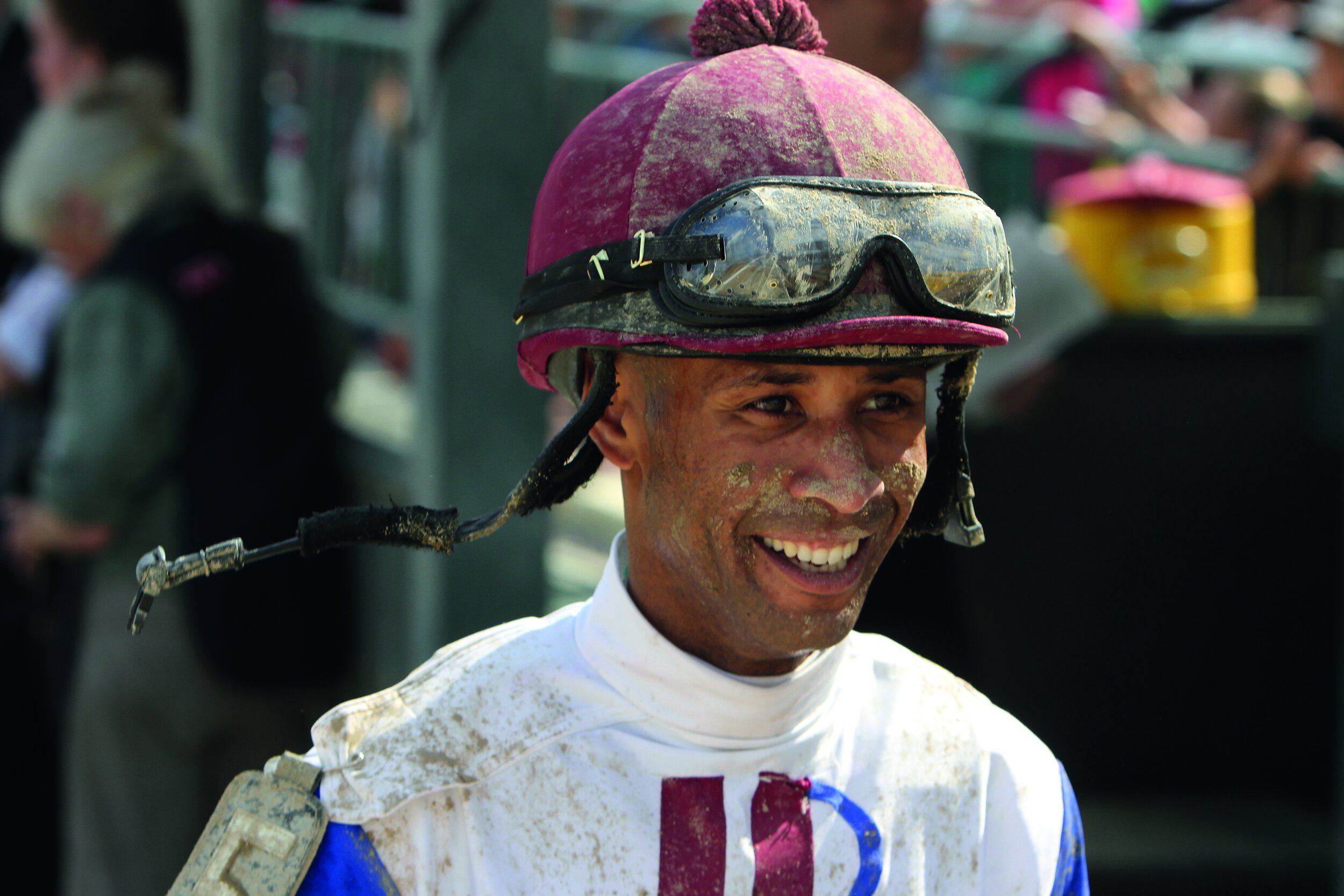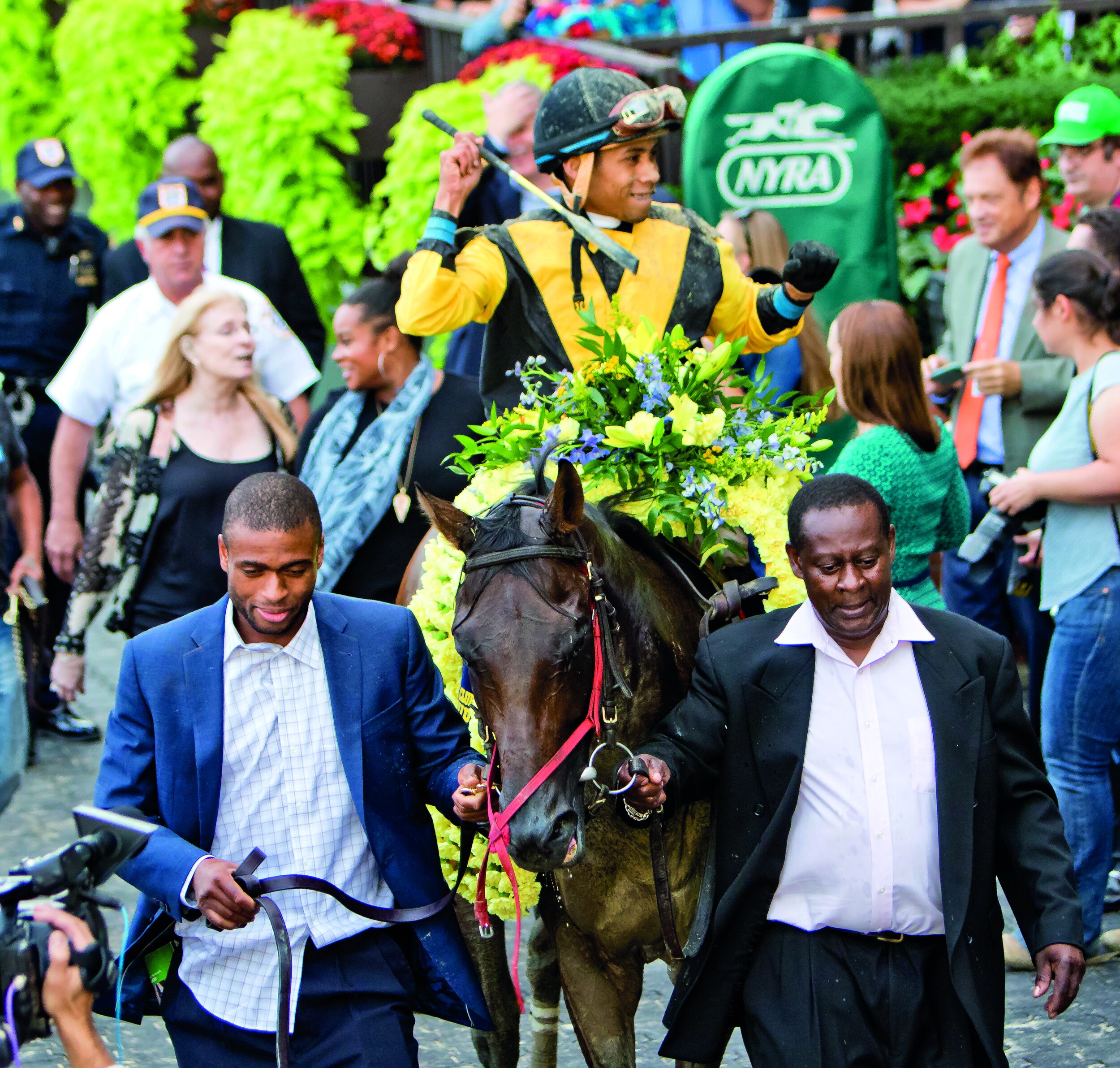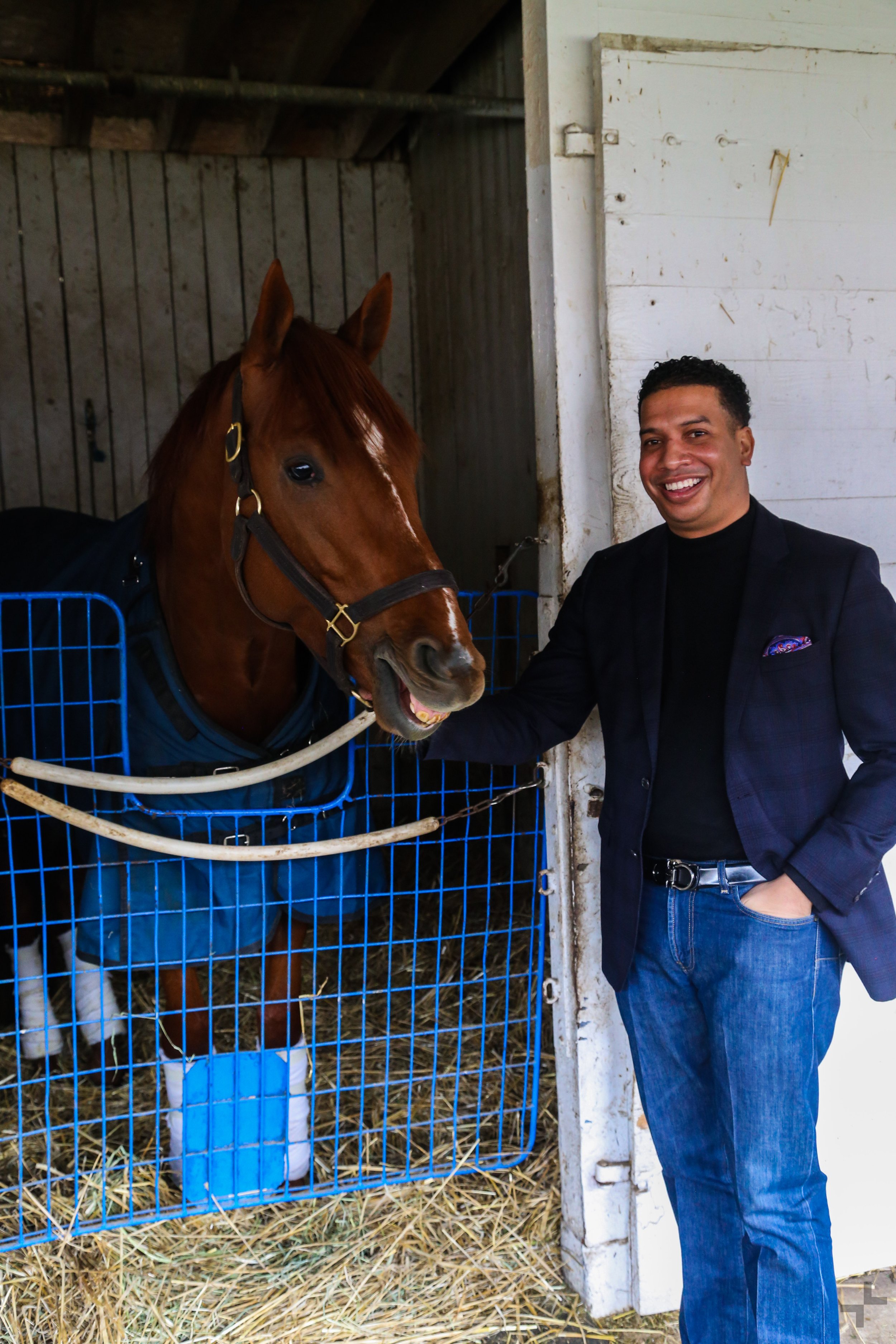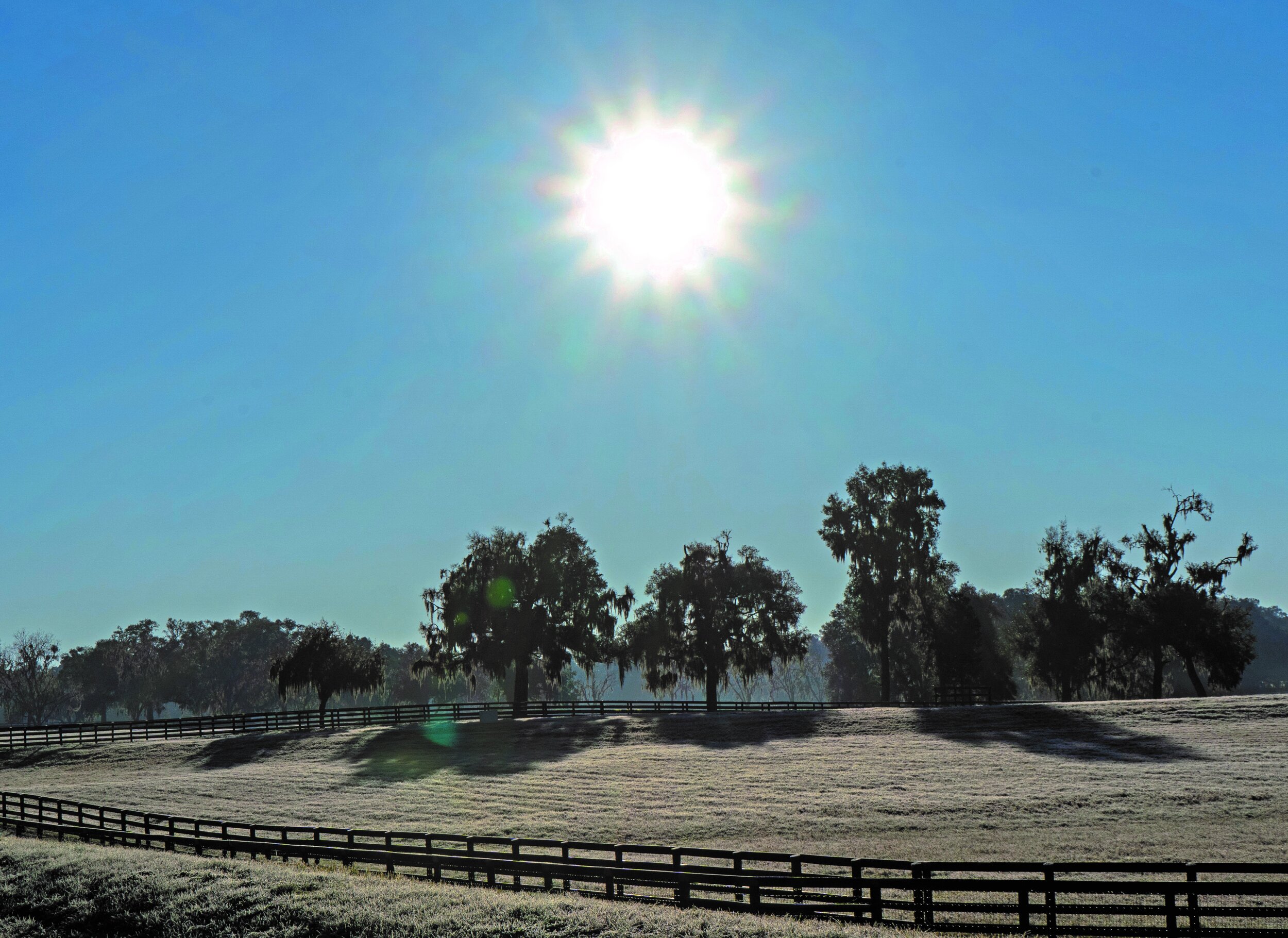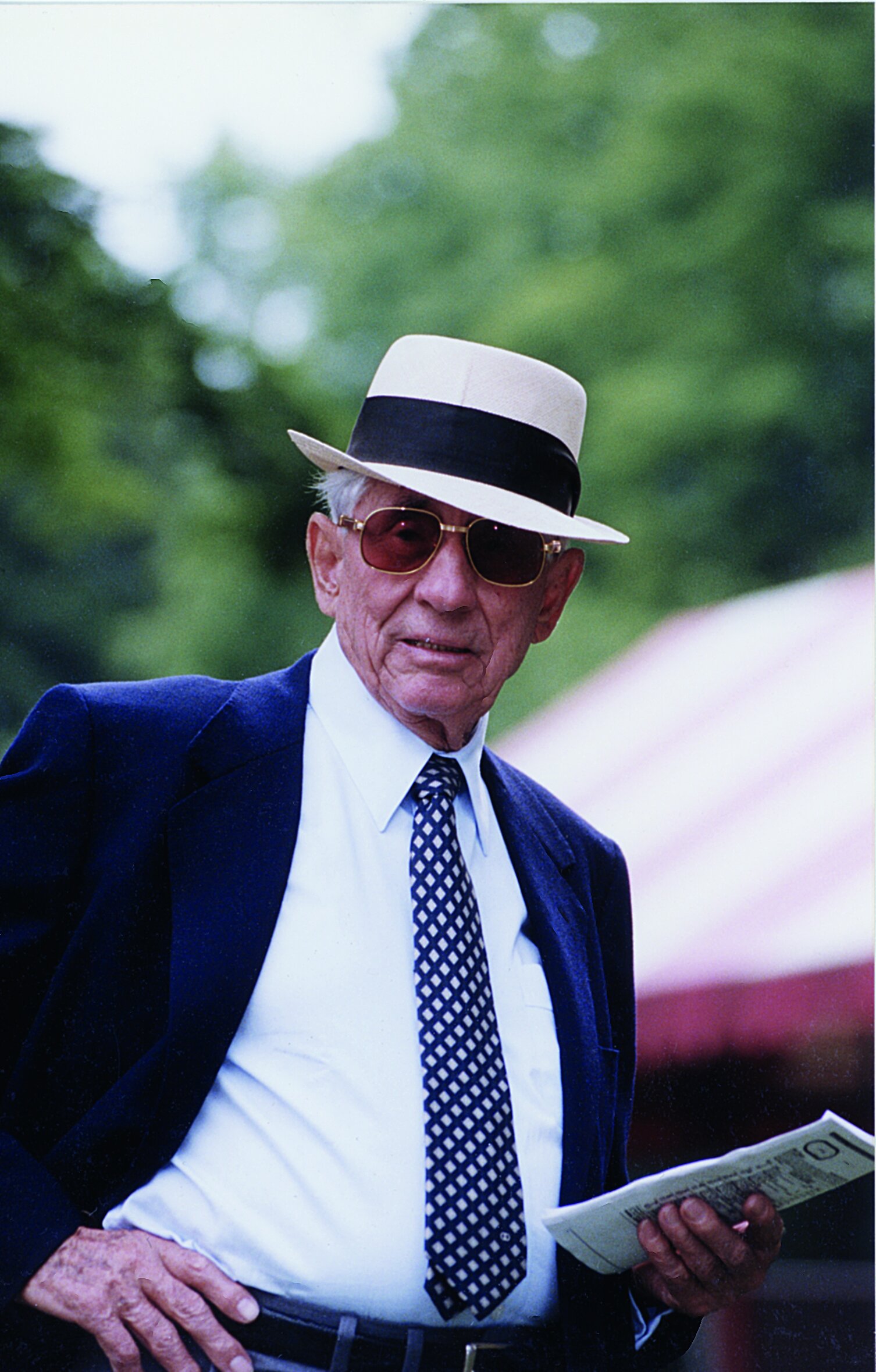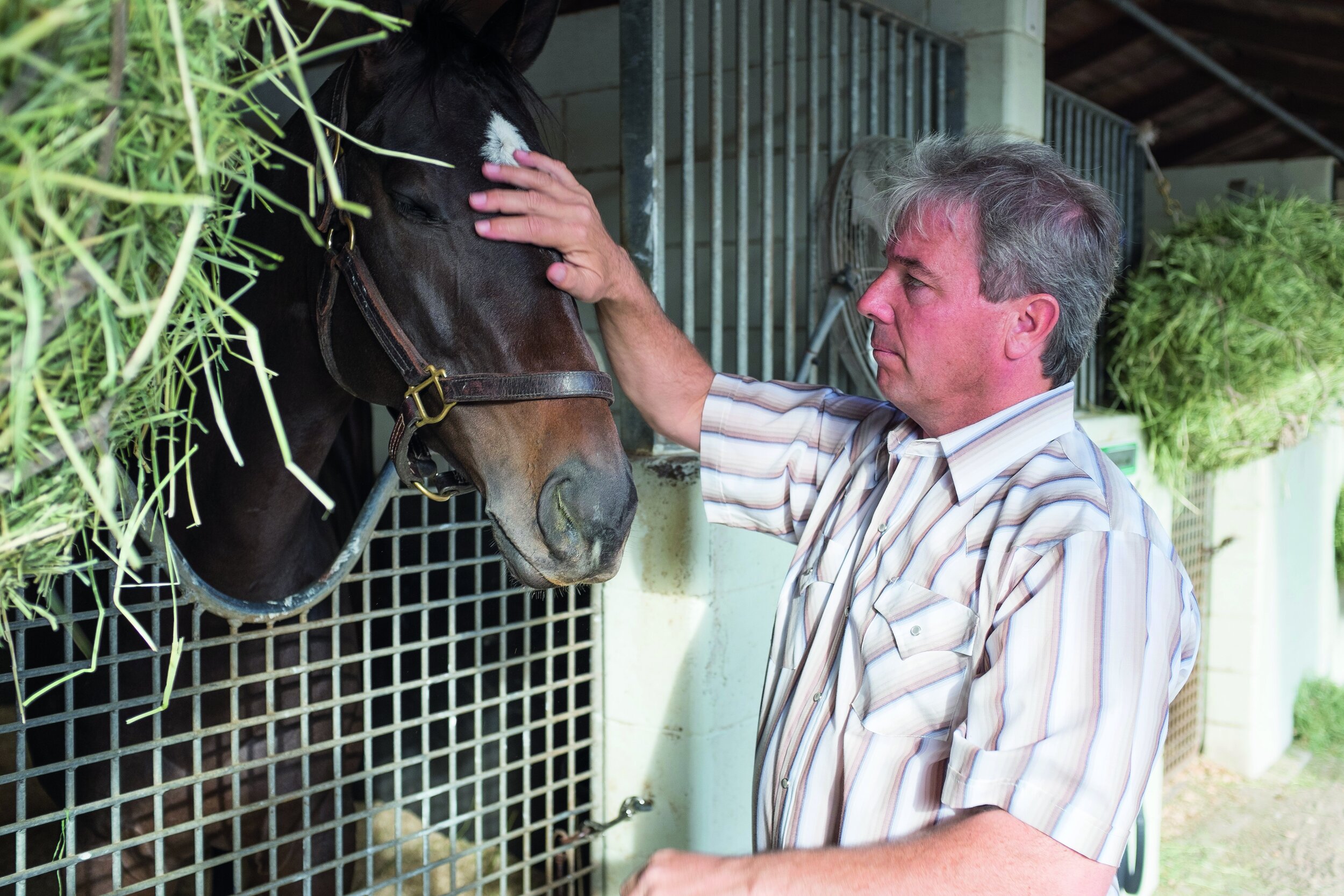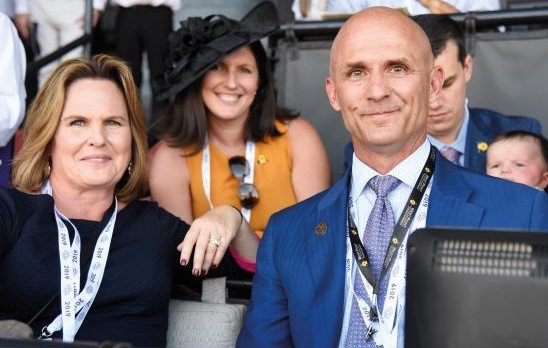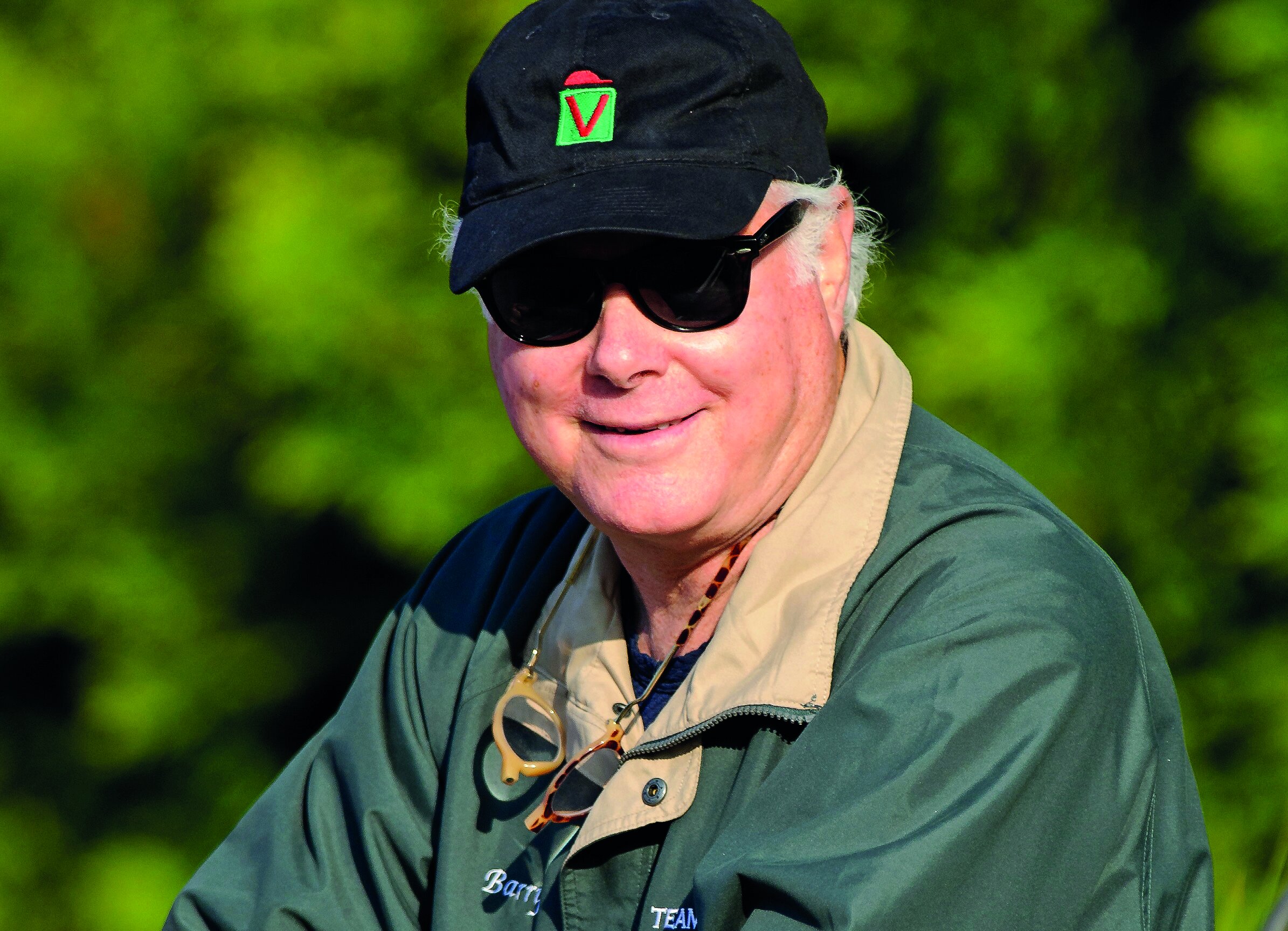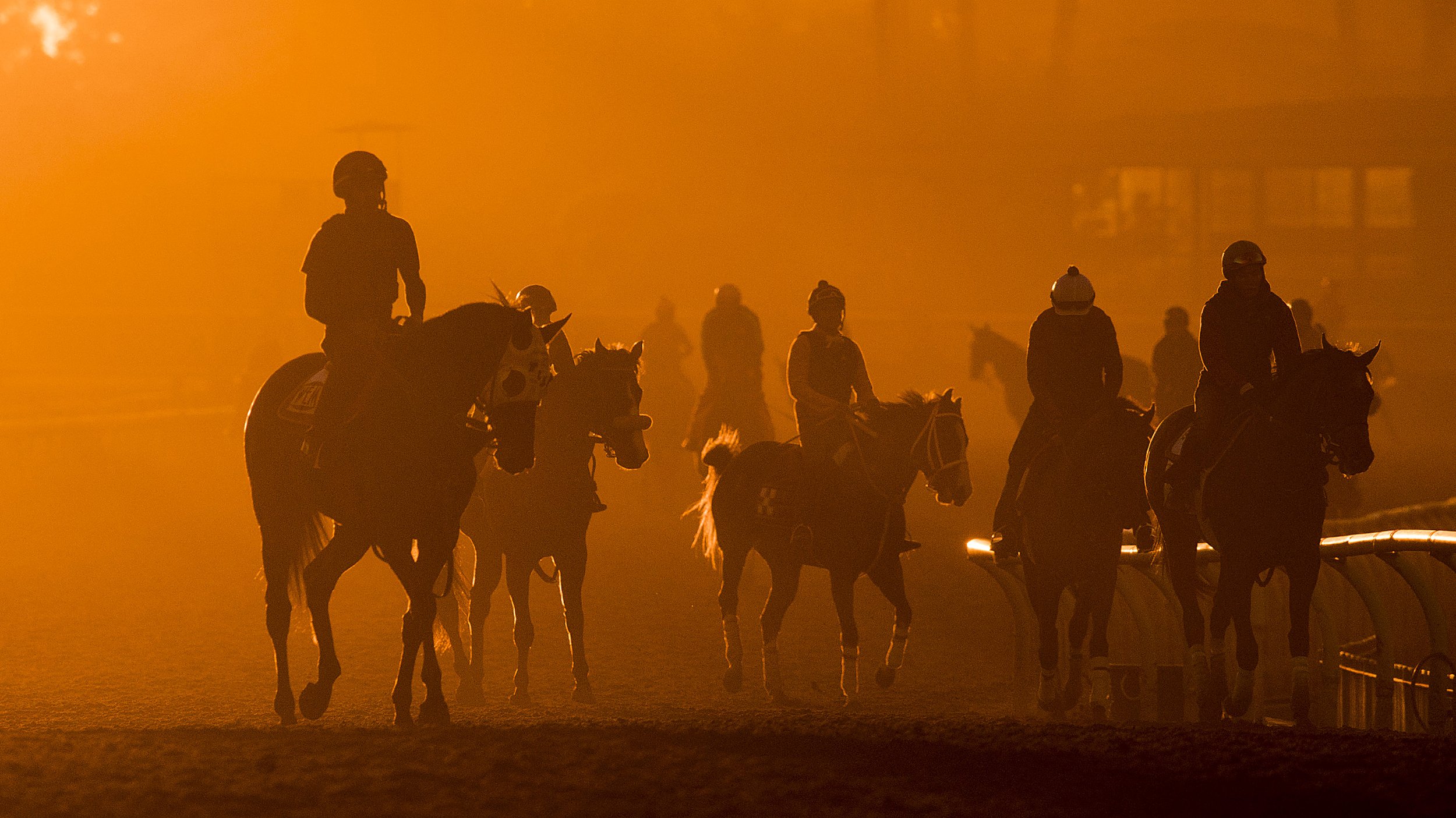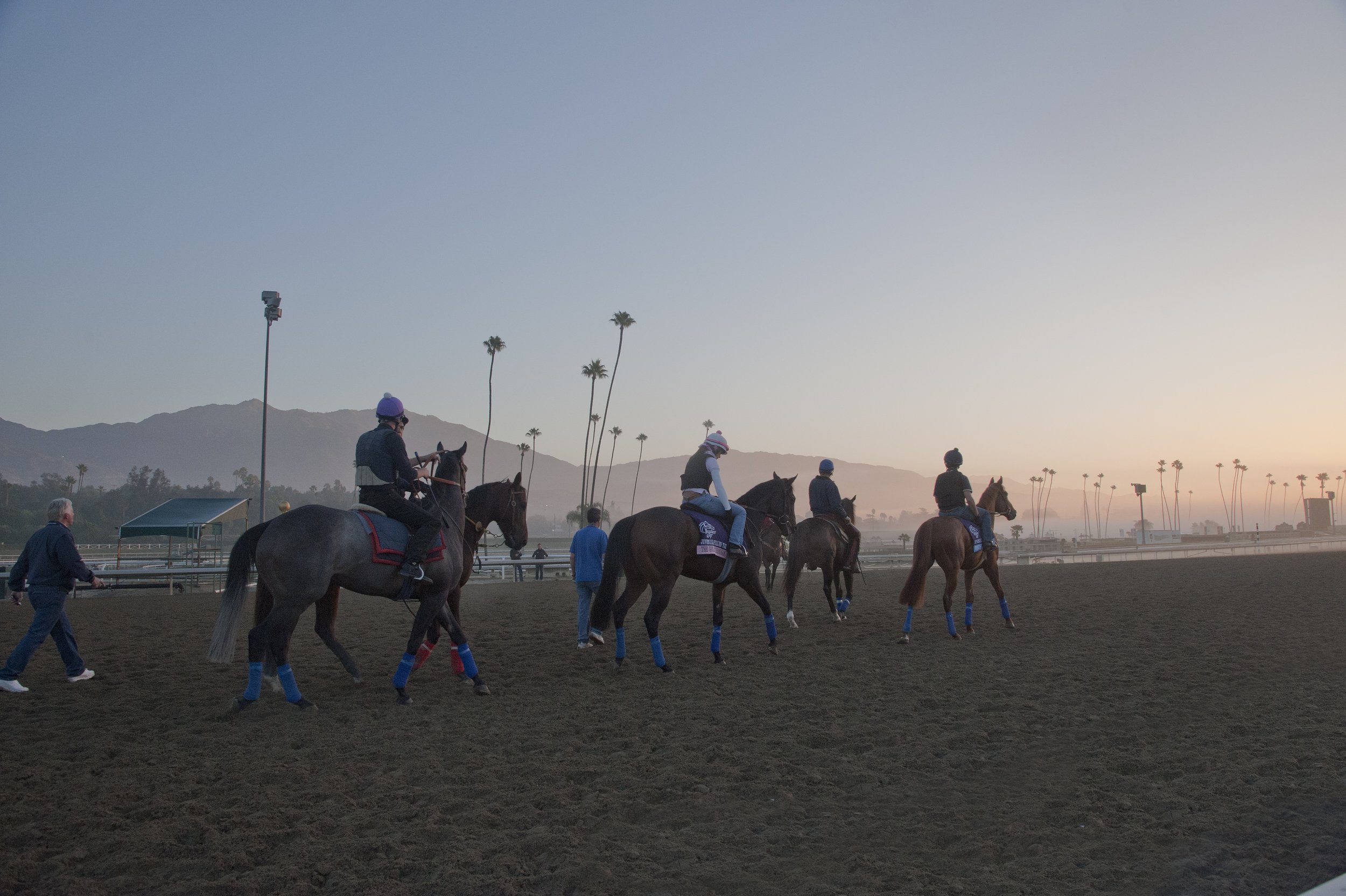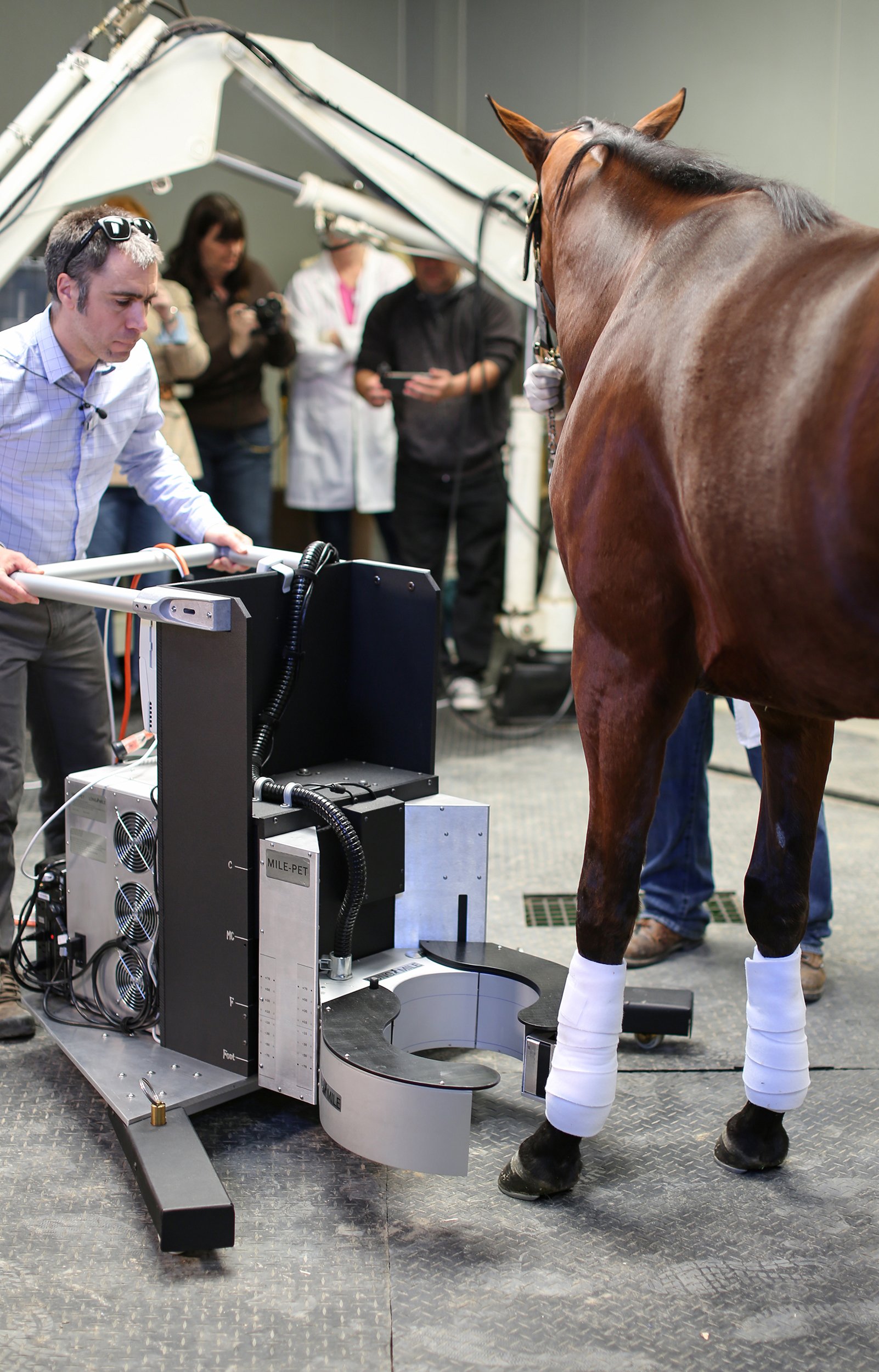Following in Their Footsteps: Lessons in Business & Training Passed Between Generations
/The story of horse racing is one of families. Usually, the conversations focus on the equine kind, sires and dams, and what the generations listed in each horse’s pedigrees bring to the athletes at the center of the sport. The human side of racing too features the age-old tale of family legacies as knowledge and experience gained by one inspires the next to join the fray.
Whether the name is Hirsch or Veitch, Bryant or Casse or Mandella, the training side of the sport has its share of families passing both knowledge and experience down to the next generation. Summers spent mucking stalls and caring for horses allow parents to share hard-earned expertise with their children, and, in turn, move them to follow in their footsteps. Their journeys to striking out on their own may mirror the ones the previous generation undertook, but the challenges that each face are ones that reflect the changing times within the sport.
The Mandellas
As the son of a blacksmith, Hall of Fame trainer Richard Mandella grew up with horses, seemingly destined to make his life about their care and training. He assisted his father Gene on their California ranch and learned to break and ride horses from an early age. Dreams of being a jockey turned into time in the saddle as an exercise rider and then years in the barn as a trainer, finding success with horses like Dare and Go, Kotashaan, Omaha Beach, and Beholder. When it came to his two children following in his footsteps, the California-based Mandella, who has been training for nearly five decades, found son Gary eager to join the family business, but the fatherly side of the Hall of Famer tried to dissuade his son from going that route.
“We were walking out to the parking lot one day, and I asked him, ‘What are you going to do when you finish school?’ And he looked at me and said, ‘I’m going to do what you do, Dad,’” Mandella shared. “I couldn't chase him away. I wanted him to get a real job. He didn't like the idea and worked for me.”
Gary, on the other hand, followed through with his father’s request that he go to college and even tried broadcasting for a time. “I feel very fortunate that people tried to open my eyes to remind me what else was out there, that I could look into something else and try this, try that,” the younger Mandella reflected. “But I knew before I turned 16, that it was going to be hard to get away from [training].”
His foresight about that career choice came from years growing up with horses right outside his window. The family had a small farm where his dad would send horses for some downtime, meaning that the younger Mandellas were working with and caring for these athletes from their earliest years. “I woke up, and every window that I looked out of my bedroom, I saw horses,” he remembered. “Just helping take care of them there and having the opportunity to be around them all the time made [me] want to be a part of that.”
Those experiences working with his dad and his horses on their family property as well as on the racetrack brought Gary Mandella the background he would need when he decided that a trainer’s life was for him. “My father’s always been more of a lead by example than make a big speech kind,” the younger trainer observed. “He showed me, expected me to pay attention, and was always clear about what the priorities should be.”
The Bryants
George Bryant started his career in the saddle, riding Quarter Horses for more than a decade, but, when age spelled the end of that career, he parlayed his lifetime with horses into training. Based in Texas, he worked first with Quarter Qorses and later Thoroughbreds, retiring in 2021 as son George Allan Bryant faced a fight for his life.
Diagnosed with stage four oral cancer, the younger Bryant battled through surgery, chemotherapy and radiation, coming out of the experience determined to follow through with his goal of becoming a trainer like his father. He had delayed starting his career until the elder Bryant stepped away, instead working as a racing manager for HDT Allied Management, hosting the Horse Racing Destination podcast, and serving as a member of the Texas Thoroughbred Association.
His decision to open his public stable and start his training career was a long overdue one in the eyes of the elder Bryant: “He’s been ready for quite a while now, [but] it was up to him to make the decision. He really didn’t want to go into training until after I retired.”
“I didn’t want to compete with him,” George Allan Bryant shared about his decision to defer his training career. Though he did not start his own stable until 2022, the younger man watched and learned from his father, always accompanying the elder Bryant to the barn and riding horses at an early age. This hands-on education prepared the younger Bryant so well that he passed his trainer’s license test on the first try, and then got on social media to share that he was ready to open his stable. He got his first client, Mike Powers, not too long after that.
Now, his barn at Sam Houston Race Park in Houston counts 20 horses, with the elder Bryant by his son’s side as his assistant, building on the determination that got him through his fight with cancer and pushing him forward.
The Casses
Mark Casse’s own roots in racing come from his father Norman, one of the founders of the Ocala Breeders’ Sales Company whose Cardinal Hill Farm in Marion County, Florida, gave Mark hands-on time with horses from his earliest years. As a 12-year-old boy, the future Hall of Famer accompanied his father to the 1973 Kentucky Derby and decided to become a trainer after watching Secretariat’s record-breaking performance. It was during those formative years that he learned what it took to become a trainer.
“You learn from many places. I was running my dad’s training barn when I was 15,” Casse recalled. “I learned from grooms, from hot walkers, from exercise riders. You learn because you love it.”
In 1979, six years after that fateful encounter with Secretariat, Casse got his first win at Keeneland in Lexington, Kentucky, and his first stakes win at Sportsman’s Park near Chicago at just 18 years old; but success at the highest level was still to come. In the late 1990s, he moved his base to Woodbine in Toronto, Ontario, and added racing north of the border to his resume. In the meantime, his oldest son Norm was growing up surrounded by family in the sport, with both of his grandfathers and then his father all involved. But his love came more from his childhood in Louisville, Kentucky, growing up with all things Derby.
“I just fell in love with horse racing just because I was here and how much the Derby meant to the community,” Casse shared. Much like his dad, Mark’s encounter with Secretariat, Smarty Jones’s Triple Crown run in 2004 spurred the younger Casse’s desire to become part of the sport: “There was just something about that horse in particular that just really excited me, and it was [then] that I decided that’s what I wanted to do.”
The younger Casse was in his early 20s when Smarty Jones came into his life, playing baseball at Bellarmine University with an eye on what was next: “I figured that I wasn’t going to be good enough to be professional by any means, but I always thought maybe I would be a coach.” After graduating from Bellarmine, Norm joined his dad’s stable in 2006, getting an in-depth education about training horses after years where his focus had been outside of racing.
“I was behind the eight ball when I first started,” Norm observed. “The intention was always going out on my own, but I knew it was going to take at least 10–12 years before I was going to be comfortable and ready.” Before he went out on his own in 2018, the younger trainer managed strings at American racetracks like Saratoga and Keeneland while the elder Casse focused on his Canadian stable—experience that mitigated the growing pains other trainers face when starting their own stables.
With his first Kentucky Oaks starter, Southlawn in 2023, Norm Casse continues to build on the lessons learned working with his Hall of Fame father and finding success in his own program with horses like Pretty Birdie and Rhyme Schemes in his barn.
The Challenges of the Business and Sport
For the Mandellas in California, the challenges are two-fold. A declining population of horses and the rising costs of maintaining a stable make that circuit a tough place to race. “There’s just [not] near the number of stables here as there used to be,” the elder Mandella observed. He let Gary know that the option to leave California and train elsewhere was there, but “[Gary] decided to stay put.”
According to the younger Mandella, the purse money that tracks in California have to offer has not kept pace with what tracks backed by casinos have to offer. Because of that, plus the higher cost of living in the state, the circuit lacks a middle. The state’s racing scene is still strong at the top, as evidenced by the success of West Coast horses coming east, but the inflated prices of real estate and feed make it harder to maintain a barn of allowance and claiming horses.
The younger Mandella has his own stable but shares a barn with his father as well. The two work together, as the Hall of Famer has scaled back his operation, happy to have his son on hand to help guide both stables through the implementation of HISA (Horseracing Integrity and Safety Authority) regulations and the growing dependence on technology. “I’m lucky I have had this barn for 49 years, and I’ve got some great people that work for me,” the elder Mandella shared. “Having him along with it makes it possible for me to get through all of this new stuff.”
Technology makes it easier to communicate with owners and to work with larger ownership groups like My Racehorse, which the Mandella barn has found success with; but it also opens up another set of challenges for the sport. As Mark Casse pointed out, social media has made sharing information, like win percentages, easier, which can be a double-edged sword.
“Everybody wants you to win at a high percentage, and that’s a challenge; and then any little move, any little thing that goes wrong or right shows up on social media, which is tough,” he observed.
Additionally, social media has also led to continued scrutiny from many different directions, especially in light of the recent charges against Jorge Navarro and Jason Servis. “It’s the reason why I have pushed so hard for HISA,” Casse shared. “I want my kids who choose to make this their business to be able to do the right thing and to be on a level playing field.”
For the father-son Bryant team, the biggest difference between starting in the 1980s and in the 2020s is the cost of labor, supplies, and the horses themselves. “It’s gotten to be pretty expensive,” the elder Bryant observed. “When I started, a bale of hay was probably $1.50, and now it’s $20.”
To succeed, “you got to be pretty business smart, and you have to have owners that pay you good,” he said, a sentiment echoed by Gary Mandella.
“This is one of the few businesses where you post bills for services rendered as opposed to pre-billing,” the trainer observed. “When you’re operating with a high overhead, it can be stressful. You have to manage that stress so that you’re just taking the horses in consideration as individuals.”
Balancing the needs of the horses with the needs of the business remains a vital part of the job of horse trainer. While each considers what their horses need, they also need to look beyond the day-to-day care and maintenance to the evolving issues of bringing both new owners and new horses to their barns.
The Search for the Next Big Thing
High up on the list of challenges for trainers is bringing in both new owners and new horses to their barns. The advent of social media as well as the rise of partnerships and microshare syndicates means that the way that the sport conducts business has changed and the men and women who make their living in it must adapt as well. While the opportunities to work as a private trainer for one or two owners may be fewer, these father-son tandems must navigate the continuing evolution in both recruiting owners and finding horses to train.
For George Allan Bryant, social media has allowed him to reach potential owners in ways that his father could not in earlier decades and has enabled his nascent barn to grow. “I can advertise my horses and business much easier,” the younger Bryant shared.
Hall of Famer Mark Casse has also seen a change in this era of instantaneous communication. Over his 40-year career, he primarily relied on phone calls to keep his clients informed, yet the 21st century has taken the phone to a new level. “The way we communicate now is much different. Now I would say that 95% of owners get updates when their horses work or when they run,” he observed. “I get a lot of texts and emails and those kinds of things. I still have lots of phone calls, but it has definitely changed.”
Alongside the changes in how owners access information about their horses and potential trainers, the rise of syndicates like MyRacehorse and Commonwealth, both of whom boast Kentucky Derby winners in Authentic and Mage, has changed the sport, opening up opportunities for more people to get involved in owning horses, but also helping to mitigate the rising costs of owning and training horses. That also leaves racing with two distinct groups calling the shots.
“I feel like the game right now is moving toward you can either afford to have all of your horses yourself and call all of your own shots, or you need to be a part of a big partnership where there’s truly no stress; you bought your piece, and everybody else handles everything,” Gary Mandella shared. “They tell you where to be, where to show up, and you can either make it or not. It’s all handled.”
Though such new approaches to ownership open the sport up to people who might not have been able to participate otherwise, it does lead to one trend that has troubled the sport over the last three decades as the majority of the sport’s highest earners tend to be in the barns of only a few.
As the younger Mandella pointed out, “Part of the selling point of these big syndicates is you can’t get in with Bob Baffert if you buy a horse yourself for $20,000 as a yearling; but if you spend $20,000 on share of more expensive horses, then you get access to Baffert or Brad Cox or Todd Pletcher. And again, now too many of the horses are in the hands of too few, and that hurts.”
For the elder Casse, these ownership groups bring a definite upside to the sport: “It would be my opinion that syndicates have introduced many people to our sport. As things go on, some of them feel the need to go ahead and branch out and do a little bit more on their own. I think they’re great for our sport.
“There’s so much to learn about our sport, and if you try to get into it on your own, it’s very difficult. But those syndicates are good for learning.”
In the case of the elder Mandella, working with MyRacehorse has streamlined his responsibilities, allowing him to step away from attending sales and focus more on selecting the horses he will train. “The owners all tend to have bloodstock agents and managers now,” Mandella shared. “I try to not interfere with that and just hope they send me some horses.”
Syndicates like MyRacehorse will bring Mandella and other trainers out to their bases in areas like Aiken, South Carolina, and allow each to select the horses they would like to train. In the case of the younger Bryant, he even started his own syndicate, Passion Racing, to offer potential owners the chance to invest in horses he trains. He also works with his owners like Adam Blick of Blick Racing, attending sales and offering his feedback on potential runners.
For trainer Norm Casse, his focus is on the two types of clients he works with, those who buy from the sales and those who claim horses. When it comes to buying horses, “I have professionals that represent me at the sales to find new horses, and I trust their opinions.” On the other hand, he is more involved with the selection of the horses he claims. “I have certain types of horses that I like, and looking at past performances, I can decide which horses would be successful in our program,” he shared. “I like claiming horses using common sense, and it’s really as simple as that.”
When it comes to adding clients and horses to their barns, the elder Casse has not seen as much of a change in recent years. Rather than actively recruiting, “I think most trainers just let the results speak for themselves and hope that owners will come,” he said. “There’s so much more information out there for people to gather, but you still get a lot of recommendations from other owners.”
Instead, he makes the best of the sales, working with clients like Charlotte Weber of Live Oak Stud to pick out potential racers. “I like it because if I don’t do a good job, get good horses, the only one to answer to or be upset with is myself,” the long-time conditioner shared. “I enjoy picking out horses, and I have a real good memory of the horses I’ve trained; and I try to duplicate that.”
What the current trends in ownership and horse selection create is a challenging environment for the sport as a whole, where success at the top levels mirrors what’s happening in other sports. As the younger Mandella observes, “One of the great selling points of horse racing is that it is truly the only major sport where you can try to win a championship without spending the most money. There’s such a strong concept in baseball, basketball, football and hockey, where somebody comes in and either increases their budget or buys a team and changes the concept.”
“None of these sports have a story like California Chrome or Real Quiet or Sunday Silence—horses that were bought for so little money and were able to take down horses that were seven figures and owned by some of the richest people in the world. Where else can you partake in that?”
Echoing his son’s thoughts, Richard Mandella sees a need for racing to restore a balance between the business and the sport: “that part needs to be addressed and always paid attention to so that we don’t get too far to the business side and get too cold about it. This is meant to be an escape for people in real life working in offices, running businesses, and having all of those headaches. Racing is supposed to be a way to get your mind on something else and have some fun.”
“The better we can make the sport look, the more chance we’re going to get people to come here,” he observed.
The evolution of the sport in the era of social media and syndication add new demands to their jobs, but these father-son tandems remain committed to the sport they have loved from their earliest days. Though the pressures of training these equine athletes and maintaining the business side of the game may test these conditioners, they are all open to the idea of their own children deciding to join their ranks.
Advice for the the next generation
George Allan Bryant’s advice is to stay on top of the bills and expenses that come with caring for these athletes and maintaining the communication necessary to work with the owners. “You’ve got to take care of your bills,” he observed. “But this is also a people business as much as it is a horse business. Your phone is always on.”
Norm Casse too echoed that aspect of the job: “The main thing I learned is how to deal with clients and owners. I never have a problem communicating with the owner because my whole life, I’ve been listening to somebody do it.” With apps like The Racing Manager, Casse and other trainers can quickly communicate with everyone associated with a horse, another avenue for keeping their clients in the know as their horses develop and progress.
For Mandella, the key to bringing in a new generation to the training business would be to show his son the ropes much as his father did. “I would warn him that this is a business that has economic risks to jump into for sure,” he said. “But also, I would give him as much support as I possibly could.”
At the center of all six trainers’ time on the track are the equine athletes that make the demanding schedules and daily stresses worthwhile. For all three families, the focus remains on the horses and their care and development, all seeking not just success on the racetrack but the connection with the animals in their care.
“You’ve got to really know your horses and pay attention to all of the little things,” George Bryant shared. “Take excellent care of your horses. The better care you take of them, the healthier they’ll be and the faster they’ll run for you.”

